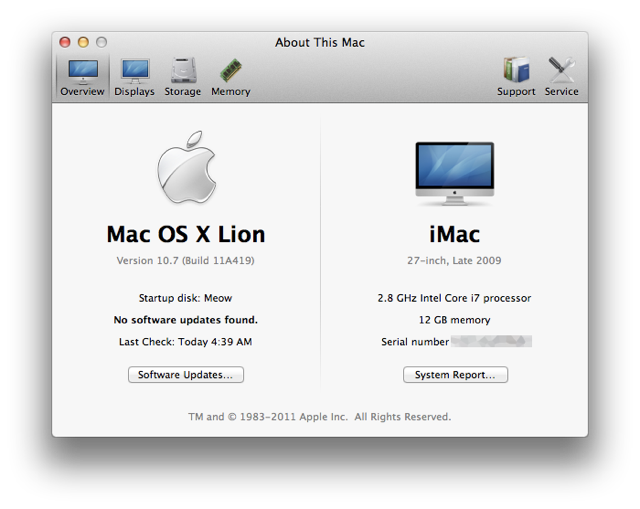Summary: This content is about Disk Utility First Aid on your Mac. It includes how to use First Aid, how to run First Aid from macOS Recovery mode, and what to do if Disk Utility First Aid fails or is not working on your Mac.
Note: The headings on this list indicate the Macintosh System bundle names; the bullet points indicate the version of the System File included in that bundle. This is to make it clearer for people searching for specific bundle versions as opposed to System File versions. Finder File versions are not indicated. 1 Classic Mac OS 1.1 Macintosh System Software (0 - 0.3) 1.1.1 System File 1 1.1.2. System 5 was also the first Macintosh operating system to be given a unified 'Macintosh System Software' version number, as opposed to the numbers used for the System and Finder files. System Software 5.0 (System 4.2, Finder 6.0, MultiFinder 1.0) System Software 5.1 (System 4.3, Finder 6.0, MultiFinder 1.0) System 6.
Disk Utility First Aid is a built-in disk repair software in macOS. Its main task is to verify and check the health of the disks and volumes on your Mac, such as Macintosh HD, SSD, external hard drives, USB drives, flash drives, and SD cards.
If necessary, First Aid is able to repair minor errors in disk file system and partition structure, which cuts the loss before the disk gets more serious corruption.
How to run First Aid to repair the disk on your Mac?
When your Macintosh HD and external drives are not working, unreadable, corrupted, or unmountable, or your Mac won't turn on, you can use First Aid to check if there is a problem inside the disk.
Step 1: Open Finder, go to the Applications folder, Utilities folder, find Disk Utility and open it.
If the problematical disk is Macintosh HD, you need to repair it after booting into macOS recovery mode :
• How to Boot into & Use M1 Mac Recovery Mode
Then you can select Disk Utility from macOS Utilities window and click Continue.

Step 2: Click on View and choose Show All Devices to list all detected disks and volumes.
Step 3: Select the drive or volume that you want to repair in the left sidebar.
Step 4: Click First Aid on the top menu of Disk Utility. https://freeforce.mystrikingly.com/blog/h-puzzle-lite-mac-os.
Step 5: Click Run to check and repair errors in this drive.
If Disk Utility reports that the operation successful or has been repaired, you're done. Check if you can access that disk. Vaus escape mac os.
If Disk Utility First Aid process has failed, you can expand 'Show Details' and see the detailed error code and message as below:
After Disk Utility can't repair the disk, it's asking if possible back up the data on this volume.
Disk Utility First Aid failed to repair the disk, what to do?
Firstdev Mac Os Update
If you receive a report that Disk Utility First Aid process has failed or Disk Utility First Aid can't repair the found errors, you'd better back up your data as much as possible. There are several solutions you can have a try to back up the data:
Firstdev Mac Os X
1. Back up the data with macOS built-in Time Machine.
Firstdev Mac Os Download
2. Recover data with iBoysoft Data Recovery for Mac.
Skipping noon mac os. 3. A local data recovery specialist.
After backing up the data, you can erase this drive with Disk Utility and make the external drive working again, or reinstall macOS on the Macintosh HD.
- How to reinstall macOS on an M1 Mac?
Apple has pushed first developer betas of iOS 13.4.5, iPadOS 13.4.5, tvOS 13.4.5, and macOS 10.15.5. The newest beta builds have been released just a week after we saw iOS 13.4, iPadOS 13.4, tvOS 13.4, and macOS 10.15.4 release. It is meant only for developers which means one should have a valid Apple developer account to get access.
Firstdev Mac Os Catalina
As you might have guessed from the version numbers, it is not a major upgrade. These are minor updates with a focus on bug fixes and performance improvements. This is what is also mentioned in the official changelog which is a generic one. Abyssal zone classic mac os. It means Apple has not gone deep and offers specific details about bugs that have been fixed or what kind of improvements should be expected.
The only noteworthy thing here is that Apple has decided to jump directly to 13.4.5 and skipped all versions from 13.4.1 to 13.4.4. It seems like whenever the stable build will be released, it will also follow the same path. It seems like Apple did not have any major changes or fixes for beta testing and it simply took a leap.
If you are not a developer or someone who does not have a developer account, you will have to wait until the release of public betas. For developers, they can install the latest beta builds by visiting Apple's developer console. If you are already on the beta channel, the update will become available over the air.
